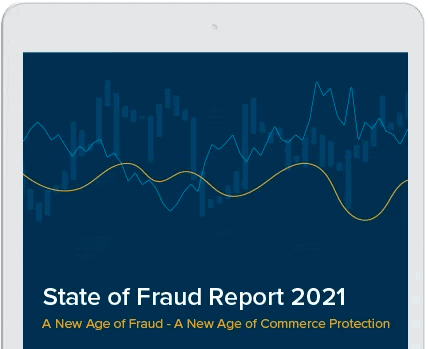The activity of going shopping is back, with May bringing more of those breezy days when we actually walked inside a clothing store, felt the fabrics, combed through the circular discount racks, and impatiently waited in line to pay.
Even complaining is back!
The in-store shopping comeback brought with it further evidence that online and omnichannel buying has never left us. With myriad purchasing options available, retailers saw omnichannel sales increase 142% in May from a year ago, boosted in part by an 83% increase in cart sizes, Signifyd’s Ecommerce Pulse data shows.
Electronic and computer sales led all verticals in May by surging an incredible 648% from a year ago. Sales of health, beauty and cosmetics also seemed to mirror an encouraging return to normal life with a gain of 115%, year over year, enticed in part by a 57% increase in using the buy now, pay later option. Sporting good sales were also boosted by 21% in May spurred by an 85% year-over-year increase in BNPL spending, Signifyd data shows.
Fraud pressure up 93% year over year
And now for the other news: All these new ways to shop have fraudsters scrambling to keep up, and they’re working hard at it. Signifyd data shows fraud pressure rose 93% in May from a year ago, with fraudsters mulling through their lengthy list of cybercrime tactics and selecting “spoofing” as the crime tool of the month.
- Electronic and computer sales led all verticals in May by surging an incredible 648% from a year ago.
- Home goods customers saw less port congestion, which offered them more products to choose from, and actually receive. Fulfillment time was down 63% in May from a year ago, which seemed to prompt shoppers to pull out their gift cards and increase spending 677% year over year, a trend that began in April, according to Signifyd’s Ecommerce Pulse data.
- Fraud pressure rose 93% overall from a year ago, and Signifyd detected an 1146% increase from last year in attempts of identity spoofing — when fraudsters try to gain access to a customer’s personal and account information.
- In 2021, spoofing crimes reported to the FBI’s Internet Crime Complaint Center accounted for $82 million in losses.
Spoofing is just that – fooling. And in May, as Signifyd detected an 1146% increase from last year in attempts of identity spoofing, it used its real-time machine learning and network-powered commerce protection to foil these plans. Fraudsters use identity spoofing by falsifying an email, a phone number or creating a website to mislead and appear as a legitimate source. It may be a spoofing site made to look like a merchant you deal with, or one that you don’t.
There are many different names for these cyber tactics – spoofing, phishing, smishing – but the goal is the same, to get shoppers to disclose personal and credit card information so that fraudsters can steal their money, their payment accounts or their identities. Signifyd can also detect the different ways fraudsters spoof, including:
- Geo, which masks the fraudsters location.
- Device, which alters or masks the device the fraudster is using.
- Automated bots, which try in rapid-fire succession to infiltrate thousands of merchants’ and shoppers’ online systems.
In 2021, spoofing crimes reported to the FBI’s Internet Crime Complaint Center accounted for $82 million in losses.
May sales were strong in most verticals
“It’s very easy to set up a new website, it’s even easier to go steal everything off a legitimate website and copy and paste it in another website where it’s one character off,” Dave Hatter, a cybersecurity consultant at Intrust-IT, said in a segment on WKRC-TV news in Cincinnati. “These people want to steal your money, if they can, and if not your money at least your information because they can use the information to perpetrate other scams, either aimed at you or as you. They’re bad and very creative.”
Sales in most categories of verticals didn’t soar in May, but saw substantial growth or held pat to close the month with an overall gain of 9%, year over year, Signifyd data shows. With the current economic uncertainty, buyers seem to be a little hesitant, or cautious, but are still buying, clearly enticed by creative purchasing options. Store credit spending in apparel increased 79% in May to boost overall sales 29% from a year ago. Both low-ticket fashion (average order value $250 or less) and mid-range fashion (more than $250 to $500) saw increases in sales from a year ago, while high fashion had a sizable drop.
There was also a leveling in sales of luggage and travel accessories, but that followed a huge surge in sales during April. How much luggage can you buy? People are still anxious or at least dreaming about going somewhere, which boosted sales in luggage and travel accessories 35% in May from a year ago, Signifyd data shows.
Fulfillment times are speeding up
Customers also saw progress in home goods, with less port congestion offering them more products to choose from, and then actually receive. Fulfillment time was down 63% in May from a year ago, which seemed to prompt shoppers to pull out their gift cards and increase spending 677% year over year, a trend that began in April, according to Signifyd’s Ecommerce Pulse data. Overall, sales in furniture and home decor stayed the same as last month, still down 22% in May from a year ago, with sales of home improvement and appliances, which surged in April, leveling back in May.
And of course, the ever-lurking and frenetic fraudsters aren’t leaving out the home goods vertical. Signifyd detected an increase of 1297% from a year ago in fraud pressure targeting customers’ aged accounts — an indication of account takeover attempts
These bad guys never stop.
Photo by Getty Images
Looking to stop spoofing? We can help








